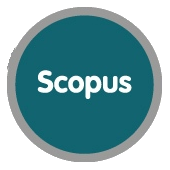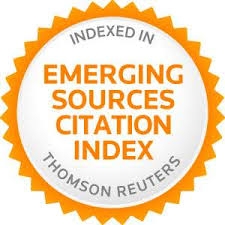Métodos para el control de las tasas de exposición en tests adaptativos informatizados
Resumen
Palabras clave
Referencias
Baker, F. B. 1992. Item Response Theory, Pa-rameter Estimation Techniques. Marcel Dekker. New York.
Davey, T., & Parshall, C.G. 1995. New algorithms for item selection and exposure control with computerized adaptive testing. Annual meeting of the American Educational Re-search Association. San Francisco.
Hambleton, R.K., & Swaminathan, H. 1985. Item Response Theory. Principles and Appli-cations. Boston: Kluwer-Nijhoff Pub. http://dx.doi.org/10.1007/978-94-017-1988-9
Hulin, C.L., Drasgow, F., & Parsons, C.K. 1983. Item Response Theory: Applications to Psychological Measurement. Homewood, IL.: Dow Jones-Irwin.
Kingsbury, G.G., & Zara, A.R. 1984. Proce-dures for selecting items for computerized adaptive tests. Applied Measurement in Edu-cation. Nº 2. Págs. 359-375.
Lewis, M.J., Subhiyah, R.G., & Morrison, C.A. 1995. A comparison of classification agreement between adaptive and full-length tests under the 1-PL and 2-PL models. Annual meeting of the American Educational Re-search Association. San Francisco.
McBride, J.R., & Martin, J.T. 1983. Reliability and validity of adaptive ability tests in a mili-tary setting. In D.J. Weiss (Ed.) New Horizons in Testing. Págs. 223-236. New York: Academic Press.
Morrison, C., Subhiyah, R., & Nungester, R. 1995. Item exposure rates for unconstrained and content-balanced computerized adaptive tests. Annual Meeting of the American Educational Research Association. San Francisco.
Revuelta, J. 1995. El control de la exposición de los items en tests adaptativos informatiza-dos. Memoria de licenciatura. Universidad Autónoma de Madrid.
Revuelta, J., y Ponsoda, V. 1996. Metodos sencillos para el control de las tasas de exposi-cion en tests adaptativos informatizados. Psicológica, 17, 161-172.
Stocking, M. 1993. Controlling item exposure rates in a realistic daptive testing paradigm. Technical Report (RR 93-2). Princeton, NJ: Educational Testing Service.
Stocking, M, & Lewis, C. 1995. A New Method of Controlling Item Exposure in Computerized Adaptive Testing. Technical Report (RR-95-25). Princeton, NJ: Educational Testing Service.
Sympson, J.B., & Hetter, R.D. 1985. Control-ling item exposure rates in computerized adaptive testing. Proceedings of the 27th Annual Meeting of the Military Testing Association. San Diego, CA: Navy Personnel Research and Development Center.
Wainer, H. 1990. Computerized adaptive test-ing: a primer. Hillsdale, New Jersey: LEA.
Enlaces refback
- No hay ningún enlace refback.


